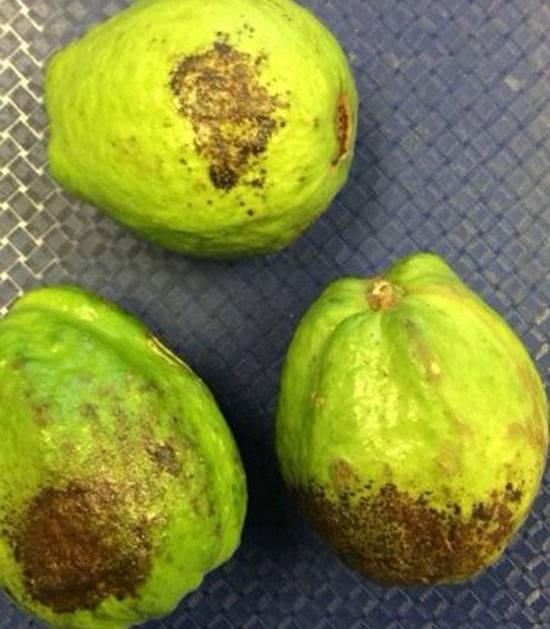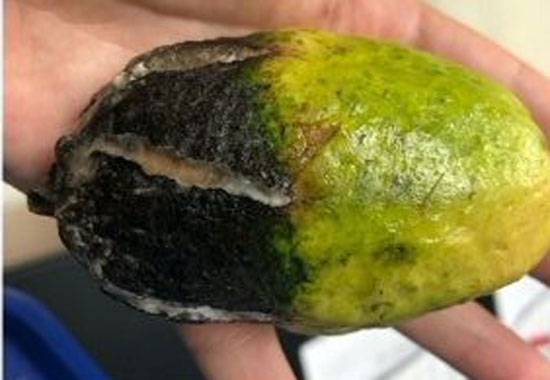Guava
Fruit Canker

Pestalotiopsis psidii
Fungal Disease

Pestalotiopsis psidii
Fungal Disease

Pestalotiopsis psidii
Fungal Disease

Pestalotiopsis psidii
Fungal Disease
Fruit canker primarily affects the green fruit of guava and is rarely observed on leaves. This disease can cause significant damage, especially under certain environmental conditions that promote its development. Below are the key details of fruit canker, its symptoms, ideal conditions for its spread, and management practices:
Symptoms:
- Initial Infection: Minute, brown or rust-colored necrotic spots appear on the fruit.
- Spot Characteristics: These spots are circular with raised margins, resembling small craters.
- Canker Spread: In severe cases, multiple cankers may merge, leading to the skin of the fruit tearing.
- Shallow Infection: The cankers do not penetrate deeply into the flesh and remain confined to a shallow area.
Ideal Conditions for Disease Development:
- Temperature Range: 25°C–30°C (77°F–86°F).
- Humidity: High relative humidity promotes disease development.
- Pathogen Dormancy: The pathogen can stay dormant in woody tissue (twigs or stems) and becomes active under stress conditions.
- Stress Factors: The disease is triggered by environmental stress like:
- Drought
- Waterlogging
- Wind damage
- Transplant shock
- Mechanical damage from pruning
- Other pathogen or insect damage
Disease Spread:
- Entry Points: The fungus invades through insect openings or wounds on the fruit.
- Spore Production: Once established, the fungus produces abundant spores.
- Spore Dispersal: Spores are spread by rain splash, initiating new infection cycles.
Management Strategies:
Insect Control:
- Apply insecticides to reduce insect feeding, which can create openings for the fungus to invade the fruit.
Tree Spacing:
- Space trees adequately to prevent canopy crowding and shading of adjacent trees, which helps reduce humidity levels and disease incidence.
Pruning:
- Prune the canopy to increase light penetration and air movement, helping to lower humidity and reduce the chance of infection.
Resistant Varieties:
- Use resistant varieties.
- Use resistant varieties.




